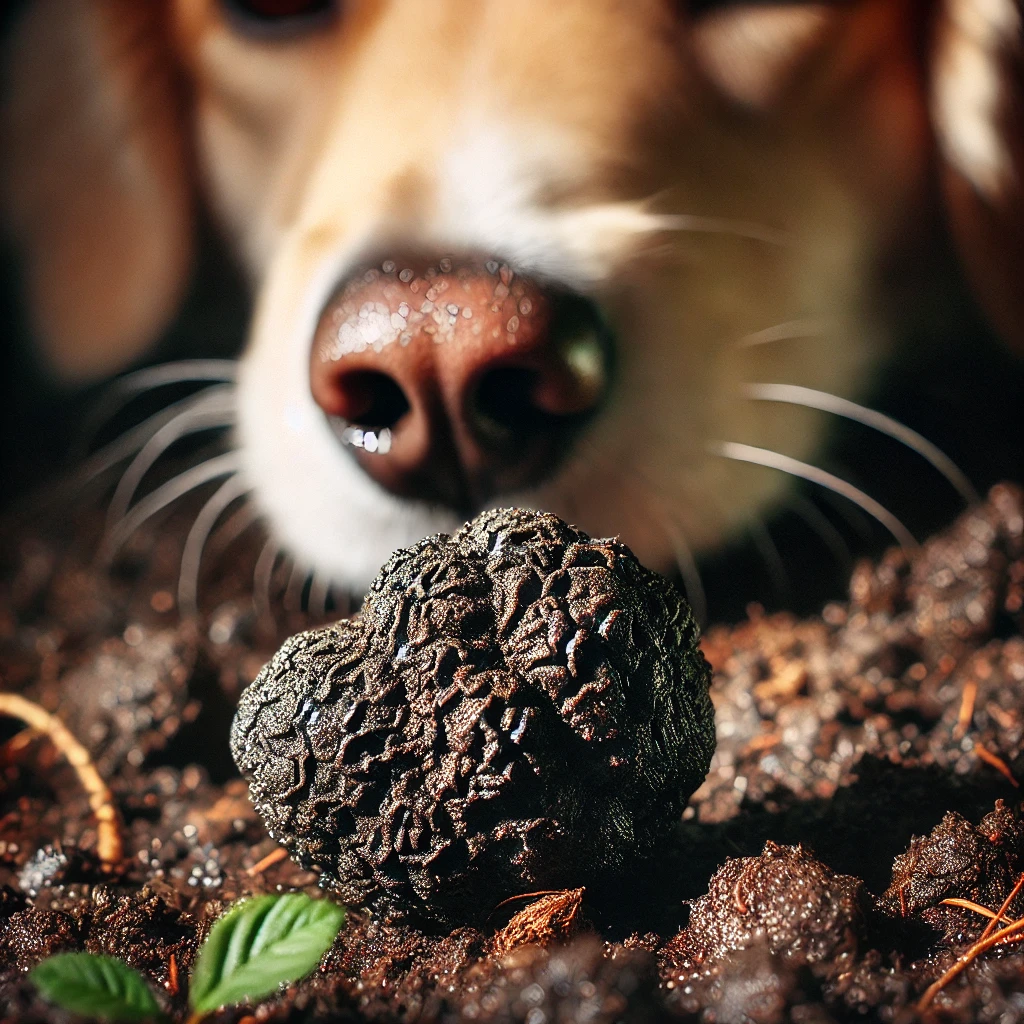Scent imprinting and scent training are two distinct but interconnected processes that play a crucial role in training dogs for various scent-related tasks, including truffle hunting. Here’s an overview of their differences:
Scent Imprinting: Scent imprinting is an early stage in a dog’s training process, typically conducted during puppyhood. It involves introducing a young dog to the desired scent and creating a positive association with it. The purpose of scent imprinting is to familiarize the dog with a specific scent, such as truffles, so they can recognize and differentiate it from other scents later on. Imprinting helps develop the dog’s olfactory memory and sets the foundation for future scent training.
During scent imprinting, a trainer may use actual truffle scent or truffle-scented materials to expose the puppy to the aroma. The trainer encourages the puppy to explore and interact with the scent, associating it with rewards or positive experiences. This positive association helps the puppy develop a strong recognition and attraction to the scent, which serves as a basis for further training.
Scent Training: Scent training refers to the process of teaching a dog to actively search for and locate a specific scent, such as truffles, on command. It builds upon the foundation established through scent imprinting. Scent training involves refining the dog’s ability to follow a scent trail, indicating the presence of the target scent, and signaling its discovery to the handler.
During scent training, dogs are gradually introduced to more challenging scent scenarios, such as searching in various environments, dealing with distractions, and working with different scent concentrations. They learn to discriminate the target scent from other scents and to follow the scent trail to locate the source. Scent training often includes techniques like positive reinforcement, reward-based learning, and gradually increasing difficulty levels to enhance the dog’s skills and reliability in scent detection tasks.
In summary, scent imprinting focuses on creating a positive association and familiarity with a specific scent during a dog’s early developmental stage. Scent training, on the other hand, builds upon the imprinting process and involves teaching the dog to actively search for, identify, and indicate the presence of the target scent. Both scent imprinting and scent training are essential components in preparing dogs for scent-related tasks, such as truffle hunting or other scent detection activities.



